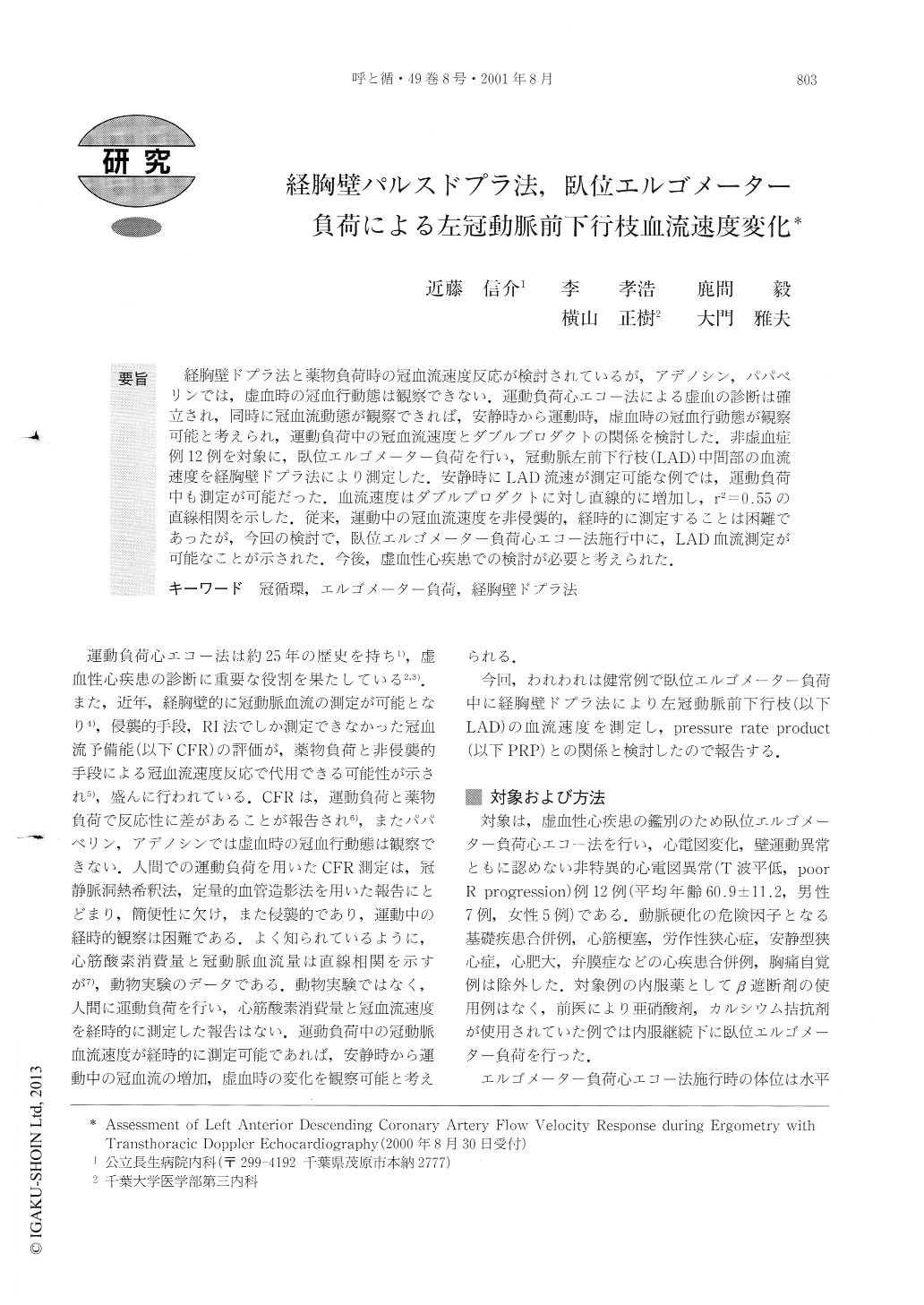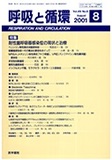Japanese
English
- 有料閲覧
- Abstract 文献概要
- 1ページ目 Look Inside
要旨 経胸壁ドプラ法と薬物負荷時の冠血流速度反応が検討されているが,アデノシン,パパベリンでは,虚血時の冠血行動態は観察できない.運動負荷心エコー法による虚血の診断は確立され,同時に冠血流動態が観察できれば,安静時から運動時,虚血時の冠血行動態が観察可能と考えられ,運動負荷中の冠血流速度とダブルプロダクトの関係を検討した.非虚血症例12例を対象に,臥位エルゴメーター負荷を行い,冠動脈左前下行枝(LAD)中間部の血流速度を経胸壁ドプラ法により測定した.安静時にLAD流速が測定可能な例では,運動負荷中も測定が可能だった.血流速度はダブルプロダクトに対し直線的に増加し,r2=0.55の直線相関を示した.従来,運動中の冠血流速度を非侵襲的,経時的に測定することは困難であったが,今回の検討で,臥位エルゴメーター負荷心エコー法施行中に,LAD血流測定が可能なことが示された.今後,虚血性心疾患での検討が必要と考えられた.
Recently, many studies assessing coronary flow reserve (CFR) during drug-induced hyperemia using adenosine with transthoracic Doppler echocardiography have been reported. This method is noninvasive and useful, but its defeet is that it doesn't supply us with information about coronary circulation in the ischemic state. Exercise echocardiography is an effective and established means of testing IHD patients. as to whether ischemia has been evoked or not. If we could detect coronary flow response during ergometry using transthoracic Doppler echocardiography, we could noninvasively and easily acquire new knowledge about coronary circulation from a resting state to an evoked ischemic state. However, coronary flow assessment during ergometry with transthoracic Doppler echocardiography has not get been reported. We attempted to measure coronary flow response during ergometry and examined the relationship of coronary flow response to pressure rate products (PRP) during ergometry.
12 patients with neither effort angina nor heart disease were examined by symptom limited ergometry using a “Stress Echo Bed” at a 25 watt 3 minute stepped protocol. Coronary flow velocity was measured using a “VingMed System V-3.5MHz probe” at the mid portion of the left anterior descending coronary artery (LAD) during ergometry.
Detection of coronary flow velocity during ergometry was difficult, but it was not impossible. We could detect coronary flow response during ergometry in most patients in whom we could detect LAD flow at rest, and we could detect 77 data points. In every case, coronary flow velocity showed linear response to PRP, and none of the patients showed reduction of flow velocity or the phenomenon of having reached a ceiling. On the whole, coronary flow velocity showed a good linear correlation with PRP (r2=0.55).
This study revealed that it is possible to detect coronary flow response noninvasively during ergometry. Coronary flow velocity response to PRP showed good correlation and narrow distribution. Referring to the many reports about CFR using drug-induced hyperemia, we can probably expect that flow response of stenotic vessels shows an abnormal distribution. We need further verification of our observations in patients with ischemic heart disease.

Copyright © 2001, Igaku-Shoin Ltd. All rights reserved.


